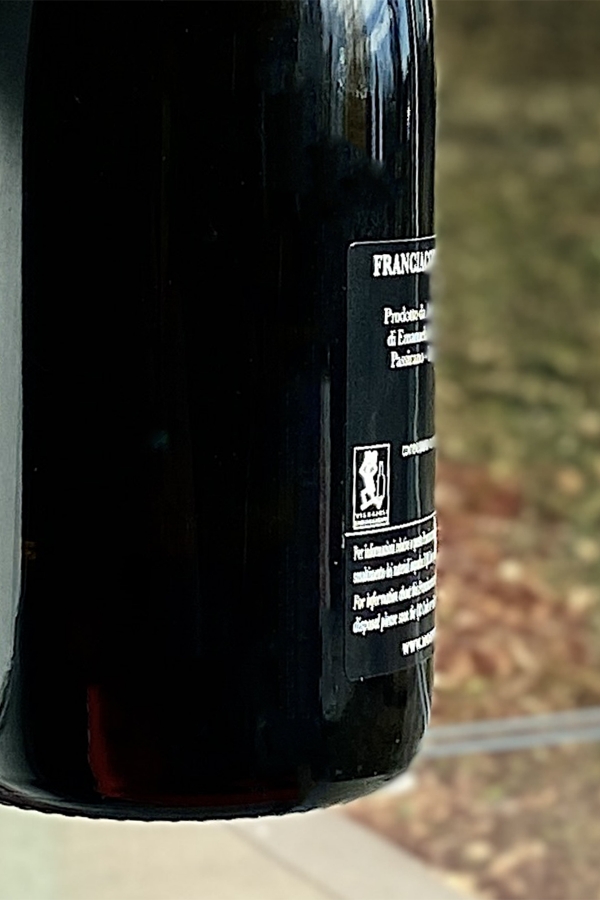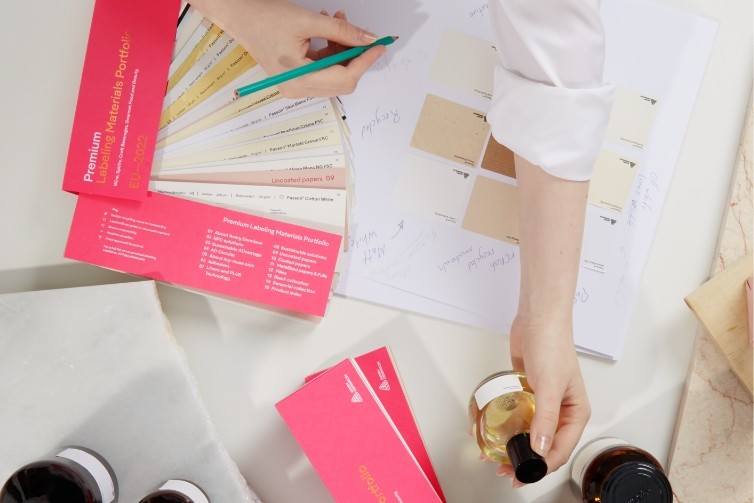Mosnel welcomes a new era of wine authenticity and traceability

The Avery Dennison, SAIT, and Sanfaustino collaboration
Winery: Mosnel
Label printer: Sanfaustino Label
AD Smartrac ID solution: AD-164 U9 inlays
Software provider: SAIT
With a long history that intertwines with modernity, the winery Mosnel has stood the test of time since 1836 in Franciacorta's picturesque countryside. Initially, this estate served as the beloved summer residence of Emanuela Barboglio's family, surrounded by rolling fields of vineyards. But in the mid-1950s, Emanuela, orphaned at 18, chose to take care of her family's Camignone countryside. In 1967, she decided to focus the company's agricultural efforts on cultivating premium vineyards under the newly established DOC Franciacorta standards. She became a trailblazer (particularly considering that most of the agricultural industry was run by men at the time) by helping establish the Franciacorta Consortium and championing the adoption of stringent production regulations. Fast forward to today, her legacy has now been entrusted to her children, Giulio and Lucia Barzanò, who continue to uphold Mosnel's commitment to excellence. Here, tradition is about maintaining age-old winemaking practices while evolving with them—just as Emanuela did. This transformation mirrors a broader shift within the industry, where wineries like Mosnel embrace innovative solutions to navigate the complexities of authenticity, traceability, and consumer engagement.

Our collaboration at Avery Dennison with SAIT, embodied in the Wineability solution, is at the heart of this shift. This joint effort represents a significant leap in addressing the ongoing challenges of the wine industry—ensuring each bottle's authenticity and managing complicated distribution networks efficiently. After all, these are challenges that the wine industry, known for its centuries-old traditions and artisanal practices, has faced for a long time. More than ever before, they are in dire need of robust solutions that streamline these processes—and that is where our work comes in.
At the core of this initiative is Wineability, a customized software developed by SAIT that expertly extracts and processes information gathered by RFID technology. This technology comes in the form of a tag, such as our AD-164 U9 inlays, which are discreetly designed to be concealed behind the label, ensuring no compromise in packaging aesthetics. The label is then printed by Sanfaustino, whose Commercial Director, Adriano Ioli, remarks: "Our goal is to provide our customers with innovative labels to help them with their digital transformation."
Built for exceptional performance in liquid environments, our inlays feature a 60 x 4 mm antenna with a global design, enabling up to seven meters of read distance on high dielectric materials like glass. Ultimately, Wineability represents a leap forward in wine tracking and authentication solutions. Integrating RFID technology offers wineries an unprecedented ability to monitor each bottle's journey from the vineyard to the consumer.


The transformative impact of this solution is demonstrated by its implementation at Mosnel, who are a long-term customer, and use our Fasson® labels for many of its references. Lucia Barzanò, the owner, offers insight into the significant changes it brought. "Our primary challenge was tracing our bottles to unauthorized markets, creating distribution disturbances," she states. The solution allows Mosnel to track each bottle precisely, offering a level of control over its distribution channels that were previously unattainable, thus safeguarding the brand's reputation.
The improvement in product traceability at Mosnel has been nothing short of remarkable. "The ability to trace the customer to whom a bottle was sold by simply scanning the QR code was a game-changer," Barzanò explains. This feature ensures the genuineness of Mosnel's wines and serves as a critical tool in combating grey market trading. The adoption of this technology has not only secures Mosnel's credibility but also plays a pivotal role in bolstering consumer confidence in the authenticity of its products.
But there's more to it than just a QR code. Wineability essentially combines the code with the unique ID of a UHF (ultra high frequency) tag, which guarantees an authenticity certificate of each wine bottle. By seamlessly combining these two unique elements, it provides a comprehensive solution with several additional advantages. This includes the ability to read multiple RFID tags simultaneously as they pass through a SAIT’s dedicated reader tunnel, eliminating the need to read each bottle individually. This not only speeds up the packaging process but also enables precise inventory management, allowing wineries to identify which bottle is in which box and even associate each bottle with its respective customer, streamlining operations and ensuring a seamless customer and brand experience.

And its benefits do not end there. Mosnel is also aware of the sustainability factor associated with its packaging and is using this technology to further educate customers. "The QR code has also been linked to a dedicated page on our website that contains important information for our customers regarding how to dispose of the packaging properly, which is mandatory by law," adds Barzanò.
Beyond addressing traceability and authenticity concerns, Wineability has more to offer. It addresses new EU regulations requiring detailed wine information on bottle labels, offering an enhanced approach by incorporating digital triggers like QR codes or NFC (near field communication), providing a more personalized experience. When a customer scans a QR code, for example, the system recognizes their geolocation, guiding them to a web page in their local language with all the additional information not found on the bottle. This feature ensures regulatory compliance and improves accessibility, which is particularly beneficial for visually impaired individuals.
Additionally, the solution allows wineries to manage the content of information related to each specific bottle with remarkable flexibility. Unlike static labels, which are ordered in bulk based on estimated production volumes, digital labels with RFID can be changed and updated as needed. Instead of printing physical labels all the time, wineries can opt for their standard labels for the bottles and save the ever-changing elements for the digital counterpart, which can be updated regularly. This flexibility is a significant advantage, allowing wineries to adapt quickly to changes in production volumes or to provide tailored information for each bottle.


This is certainly something that Mosnel is considering for the future. "We are exploring avenues to use tags for providing more detailed product information and for our special editions," shares Barzanò. This forward-looking approach is a testament to Mosnel's commitment to leveraging technology for enhanced customer experiences and operational efficiencies. As a result, the winery continues to stay on top of the game, not only serving top-quality, premium wines but also providing the best customer experience.
Our joint effort with SAIT is a great example of how technology can be harmoniously integrated with tradition. This collaboration paves the way for the wine industry, demonstrating how innovative solutions can effectively address long-standing challenges. The combined capabilities of our inlay technology and SAIT's Wineability offer a robust resolution to authenticity, traceability, and customer engagement issues.
This innovative leap forward marks a new chapter in the story of winemaking, where each bottle literally tells its unique journey - from vineyard to glass. It's about a future where wineries are not just custodians of age-old practices but also adopters of emerging technologies.
To delve deeper into our RFID solutions and how they can transform your operations, please contact our EMEA Smartrac specialists, Silvio Margutti, Sales Manager Industry and Eliza Lachkova, Business Development Specialist.


